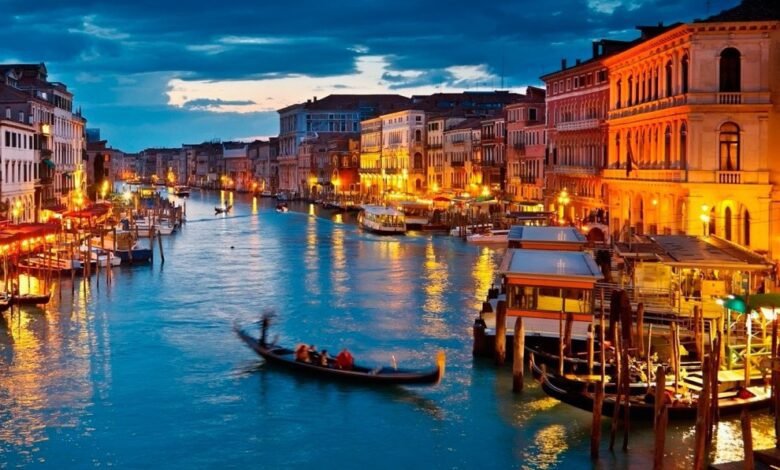Traveling to Italy: Essential Tips for a Memorable Experience

Begin your Italian journey by immersing yourself in the local rhythm. Italians are known for their laid-back ‘la dolce vita’ approach to life. Instead of rushing from one sight to another, take a moment to enjoy a leisurely espresso at a streetside café or savor a gelato under the sun.
Importance of Pre-Booking Online Tickets
One essential tip that stands out for travelers is the advantage of purchasing tickets online in advance. Pre-booking is essential for Italy’s renowned attractions like the Colosseum in Rome or Florence’s Uffizi Gallery.
Firstly, online tickets can save you from long waiting lines, often stretching for hours. Secondly, they often come with specific time slots, ensuring that the sites are manageable. Lastly, in peak tourist seasons, tickets at the venue can get sold out. Therefore, to guarantee entry and have a smoother experience, online pre-booking is crucial.
Dive into Regional Cuisines
While pizza and pasta are globally recognized as Italian staples, diving deeper into Italy’s culinary landscape reveals a diverse palate influenced by each region’s history and geography.
For instance, in the northern region of Lombardy, creamy risottos take center stage. Made with Arborio rice and perfectly cooked, the dish blends flavors and textures. Venturing further south, Emilia-Romagna welcomes you with its famous Parmigiano-Reggiano cheese and Parma ham. This region is also the birthplace of the rich and savory Bolognese sauce.
Tuscany, renowned for its scenic landscapes, also boasts a rustic cuisine. Here, dishes like ribollita, a hearty bread soup, and pappa al pomodoro, a tomato and bread-based delight, reflect the region’s agricultural roots.
Meanwhile, the coastal Amalfi region brings forth a banquet of seafood wonders. Freshly caught fish, sun-ripened tomatoes, and locally produced olive oil create flavorful and aromatic dishes.
Let’s remember the island regions. In Sicily, savor arancini, deep-fried rice balls filled with various stuffings, and in Sardinia, treat yourself to pane carasau, a thin and crispy bread.
Furthermore, pair them with local wines when indulging in these regional specialties. Each region prides itself on specific varietals, enhancing the overall dining experience.
Lastly, engage with vendors and chefs while exploring local markets and eateries. Their insights and stories add a rich layer of authenticity to your gastronomic journey. In essence, letting regional cuisines guide your travel itinerary offers a sensory exploration of Italy, making your trip both flavorful and memorable.
Public Transportation Know-how
Navigating the vibrant streets of Italy is made more accessible thanks to the country’s well-organized public transportation system. Most Italian cities, from Rome’s historic charm to Venice’s bustling canals, offer an extensive network of metro, buses, and trams, ensuring that every nook and cranny is accessible.
Start by getting a transportation map from local tourist information centers or download mobile applications dedicated to Italian transit. These tools can provide real-time updates, ensuring you catch your ride on time and without hassle.
Using public transport isn’t just about convenience; it’s also an economical choice. Rather than spending on taxis or car rentals, consider purchasing daily or weekly passes. These offer unlimited rides within specific periods, catering perfectly to tourists wanting to explore multiple sites in a day.
Moreover, traveling on local buses or trams allows for an authentic Italian experience. Listen to the chatter of locals discussing their day, or observe the everyday life of an Italian city as it whizzes by your window.
However, with the convenience of public transportation comes a word of caution: always remain vigilant. Crowded metros or buses can be a haven for pickpockets. Keep your belongings close, consider investing in anti-theft bags, and always be aware of your surroundings.
In essence, embracing Italy’s public transport system can be both a practical choice and a cultural experience. It’s a bridge between a tourist’s life and an Italian local’s rhythm.
Learn Basic Italian Phrases
Language forms the heart of any culture, and Italy is no exception. While many Italians are proficient in English, particularly in areas frequented by tourists, making an effort to learn and use basic Italian phrases can drastically enhance the quality of your trip.
Start with greetings, which are the key to initial interactions. “Buongiorno” (Good morning) and “Buonasera” (Good evening) can be your go-to phrases as you start your day exploring or settle into a local ristorante for dinner. Expressing gratitude with a heartfelt “Grazie” (Thank you) or indicating appreciation with “Delizioso” (Delicious) when complimenting a meal adds a touch of warmth to any conversation.
In the vibrant markets or bustling town centers, “Quanto costa?” (How much does it cost?) can be invaluable, ensuring you navigate transactions smoothly. Moreover, understanding responses or deciphering signs becomes easier if you familiarize yourself with numbers in Italian.
Equally, little phrases of politeness such as “Mi scusi” (Excuse me) or “Per favore” (Please) show respect and consideration towards the locals, fostering positive engagements.
To assist in your linguistic journey, consider downloading language apps or carrying a pocket-sized Italian phrasebook. These resources can be indispensable in moments of uncertainty.
Remember, attempting to communicate in the local tongue is often viewed as a gesture of respect. It’s not about fluency but effort. Engaging with Italians in their native language, even if it’s just a word or two, deepens connections and often leads to more prosperous, more genuine experiences.
Respect Local Customs
Italy, with its rich tapestry of history and tradition, is a land where customs and rituals are held in high regard. As a visitor, understanding and respecting these practices not only ensures you leave a positive impression but also enriches your overall experience.
Churches, for instance, are more than just places of worship in Italy; they are repositories of art, history, and culture. When entering these sacred spaces, dressing appropriately is paramount. This often means covering shoulders and knees. A handy tip for travelers is to carry a lightweight scarf, which can be draped over the shoulders or wrapped around the waist as needed.
But it’s not just churches. Many Italian towns and villages have local festivals, celebrating everything from historical events to the harvest of local produce. If you’re fortunate enough to attend one, observe the proceedings before diving in. Sometimes, what might seem like a fun, open event might have ceremonial aspects that are best watched rather than participated in by outsiders.
Dining in Italy also comes with its own set of unspoken rules. For instance, cappuccinos are typically enjoyed in the morning rather than ordered post-dinner. When toasting, make sure to look your fellow diner in the eye, as it’s seen as a gesture of sincerity.
Furthermore, always greet shopkeepers when entering a store with a simple “Buongiorno” or “Buonasera,” depending on the time of day. This small acknowledgment is a mark of respect and is always appreciated.
In essence, being attuned to and respecting local customs is about more than just following rules; it’s about immersing oneself genuinely in the Italian way of life. The beauty of travel lies in these nuances; embracing them ensures a deeper, more meaningful connection to the places you visit.
Stay Digitally Connected
In an era of digital connectivity, ensuring seamless access to the internet while traversing Italy’s iconic landscapes and cities can significantly amplify your travel experience. Sharing snapshots from the vineyards of Tuscany, accessing online city guides, or video-calling loved ones back home becomes effortlessly possible with consistent internet.
While many Italian cities do offer complimentary Wi-Fi in public areas, these can sometimes be sporadic or overwhelmed by user demand. Moreover, data security can be a concern on open networks.
A transformative solution for modern travelers is the e-SIM card. Unlike traditional SIMs, an e-SIM is a digital SIM that allows you to activate a cellular plan without having to use a physical SIM card. The actual convenience lies in its ability to be purchased and set up online in advance of your travels. Once in Italy, you can seamlessly connect to local networks without the hassle of physically swapping cards or visiting stores.
To leverage this technology, ensure your device is e-SIM compatible. Leading service providers offer a variety of plans catering to different data and call needs. Once you’ve made your choice, the setup often involves scanning a QR code or entering details manually.
If e-SIM isn’t an option for you, portable Wi-Fi devices remain a reliable alternative. They provide a dedicated hotspot and can be shared among multiple devices.
In summary, while Italy beckons with timeless allure, staying digitally connected, primarily via modern solutions like e-SIM, ensures you’re equipped for convenience, sharing, and safety in this captivating land.
Read more about buying a sim card in Italy.
Travel Off the Beaten Path
Italy, a country celebrated for its rich history, artistic legacy, and gastronomic delights, is dotted with renowned cities that draw millions annually. While the allure of Rome’s Colosseum, Venice’s gondolas, and Florence’s art galleries is undeniable, venturing beyond these iconic destinations unveils an equally captivating yet less trodden Italy.
Take Lucca, for example. Nestled in Tuscany, this city, encircled by well-preserved Renaissance walls, exudes charm at every corner. Its cobblestoned streets, historic churches, and quaint piazzas offer a serene escape from the usual tourist hustle. Renting a bike and riding atop the city walls provides panoramic views, making for an unforgettable experience.
Then there’s Matera, located in the southern region of Basilicata. Known for its ancient cave dwellings, or “Sassi,” Matera tells a story of human civilization spanning millennia. Wandering through its stone-carved alleys is akin to stepping back in time, offering a profound connection to history.
For those drawn to scenic beauty, the villages of Cinque Terre, perched dramatically on the Ligurian coastline, are a dream come true. Colorful houses cascade down rugged cliffs, overlooking the azure waters of the Mediterranean. While tourists do flock here, exploring lesser-known trails or visiting during shoulder seasons ensures a more intimate experience.
Beyond these, Italy brims with hidden treasures: the tranquil canals of Comacchio, the Alpine charm of South Tyrol, or the trulli houses of Alberobello. Each destination offers a unique glimpse into Italy’s diverse cultural and natural tapestry.
In conclusion, while Italy’s famed cities deserve their accolades, venturing off the beaten path promises authentic encounters, unparalleled beauty, and stories that remain with you long after the journey ends.




